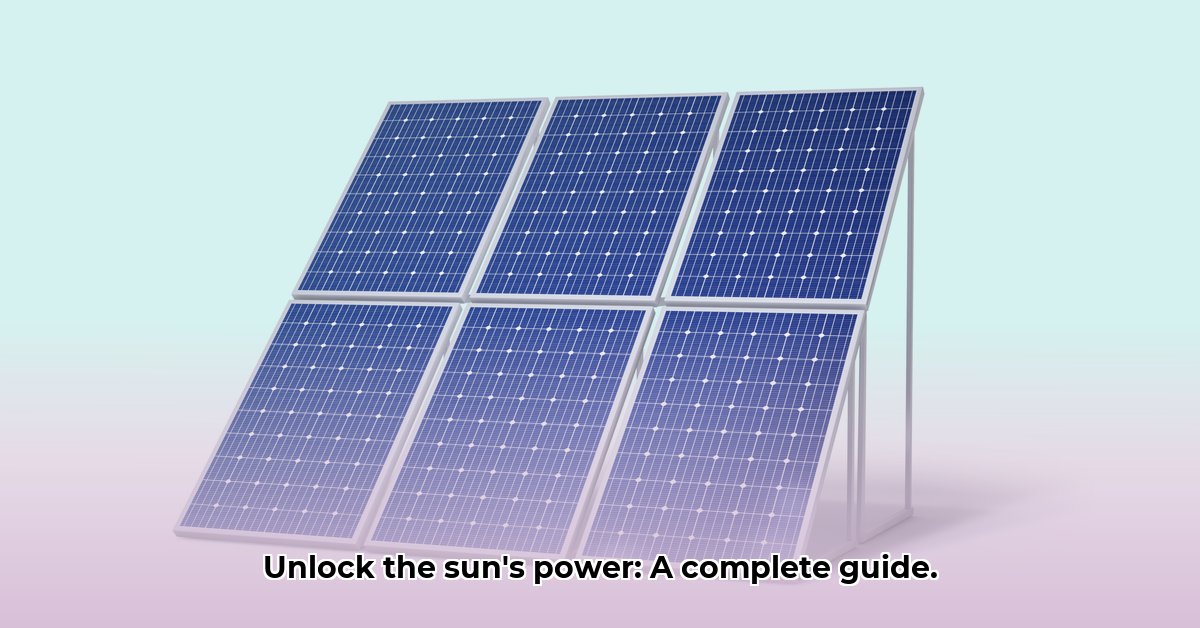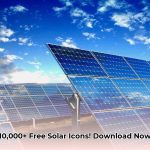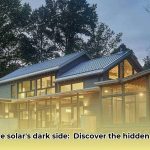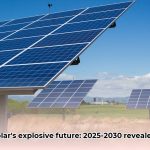Want to go solar but don’t know where to start? The sun offers a huge amount of free energy, and there are many ways to tap into it. Learn more about the main types of solar energy here. This guide breaks down the different types of solar power – from familiar rooftop panels to lesser-known technologies. We’ll explain how each one works, their pros and cons, and provide practical tips on choosing and installing the right system for your home or business. Whether you’re a homeowner, a business owner, or just curious about solar, this guide will help you understand how to harness the sun’s power and save money on your energy bills. Let’s dive in and unlock the potential of solar energy!
Types of Solar Energy: A Detailed Look at Harnessing the Sun’s Power
Harnessing the sun’s energy is increasingly vital as we seek cleaner, more sustainable energy sources. Fortunately, many ways exist to tap into this virtually limitless resource. Let’s explore the different solar energy technologies available today, from familiar rooftop solar panels to more advanced systems. This guide will help you understand how each works, its advantages and disadvantages, and where it excels. What are the crucial factors in selecting the appropriate solar technology for your specific needs?
Photovoltaic (PV) Systems: Sunlight Straight to Electricity and Understanding Solar Panel Efficiency & Types
Photovoltaic systems, often called “solar panels,” are the most common way to use solar energy. These systems directly convert sunlight into electricity using specialized cells made of semiconductor materials, typically silicon. Sunlight excites electrons in the cell, creating an electricity flow that can power your home or business.
Types of PV Cells:
- Monocrystalline: Made from a single silicon crystal, these cells boast the highest efficiency and longest lifespan. However, they are also the most expensive to produce. They are identifiable by their uniform dark appearance.
- Polycrystalline: These cells, made from multiple silicon fragments, are less efficient but cheaper than monocrystalline cells. They offer a good balance between cost and performance, making them a popular choice for many applications. They have a speckled, bluish appearance.
- Thin-film: These are lightweight and flexible, allowing them to be applied to various surfaces. Their efficiency is lower than crystalline types, but their versatility opens exciting possibilities, such as integration into building materials, flexible solar panels, and portable chargers. Common thin-film technologies include amorphous silicon (a-Si), cadmium telluride (CdTe), and copper indium gallium selenide (CIGS).
Understanding Solar Panel Efficiency:
Solar panel efficiency refers to the percentage of sunlight converted into electricity. Higher efficiency means more power generated from the same surface area. Monocrystalline panels typically have the highest efficiencies (20-22%), followed by polycrystalline (15-17%), and thin-film (10-13%). Efficiency is affected by temperature, shading, and the angle of sunlight. Always consider the panel’s efficiency rating when choosing a system.
Pros of PV Systems:
- Low Maintenance: Once installed, PV systems require minimal maintenance. Occasional cleaning keeps them performing optimally.
- Cost Decreases: The cost of PV systems has significantly decreased, making them accessible to a wider range of consumers. Government incentives and mass production contribute to this trend.
- Versatile: PV systems are suitable for homes, businesses, and large-scale utility plants—virtually anywhere with sunlight. Off-grid systems with battery storage are also possible.
- Scalable: PV systems can be scaled from small residential setups to large solar farms.
Cons of PV Systems:
- Intermittency: Solar energy is only available when the sun is shining, so cloudy days and nighttime mean reduced energy production. Battery storage can mitigate this.
- Weather Dependent: The efficiency of a PV system can vary based on weather conditions like cloud cover, snow, and dust. Regular cleaning and proper panel angle can help.
- Initial Cost: The upfront cost of installing a PV system can be significant, although financing options like loans, leases, and power purchase agreements (PPAs) are available.
- Environmental Impact of Manufacturing: The manufacturing process of solar panels involves the use of certain materials and energy, which can have an environmental impact. However, the long-term benefits outweigh these concerns.
Installing Solar at Home: A Step-by-Step Guide
- Assess your energy needs: Determine your average monthly energy consumption by reviewing your utility bills. Identify areas where you can reduce energy consumption through energy-efficient appliances and practices.
- Evaluate your roof: Assess your roof’s suitability for solar panels. Consider orientation (south-facing roofs are ideal in the Northern Hemisphere), tilt, shading from trees or nearby buildings, and structural integrity. A professional assessment may be necessary.
- Gather quotes: Obtain quotes from several reputable installers. Compare price, warranties, equipment types, installer reputation, and customer reviews. Ask for detailed proposals outlining system design, energy production estimates, and financing options.
- Explore financing options: Understand different financing options like loans, leases, and power purchase agreements (PPAs) to choose the best option for your budget and financial goals. Consider the long-term cost savings and return on investment.
- Check local regulations and permits: Review local regulations and building codes related to solar panel installations. Obtain necessary permits before starting the installation process.
- Explore incentives and rebates: Investigate potential rebates, tax credits, or other financial incentives offered by local, state, or federal governments to reduce the overall cost of the system. The Database of State Incentives for Renewables & Efficiency (DSIRE) is a great resource.
Concentrated Solar Power (CSP): Harnessing the Sun’s Intensity for Renewable Energy Solutions and Large-Scale Power Generation
Concentrated Solar Power (CSP) plants use mirrors or lenses to focus a large area of sunlight onto a central receiver, generating extremely high temperatures. The concentrated heat converts water into steam, which drives turbines to generate electricity—similar to traditional power plants but fueled by the sun. CSP is best suited for large-scale power generation and offers effective renewable energy solutions.
CSP Technologies:
- Parabolic troughs: These systems use long, curved mirrors to focus sunlight onto a tube containing a heat-transfer fluid (usually oil or molten salt). The heated fluid is then used to generate steam.
- Power towers: Hundreds or thousands of heliostats (mirrors that track the sun) focus sunlight on a central receiver atop a tall tower. The receiver contains a fluid that is heated to high temperatures and used to generate steam.
- Dish/engine systems: Smaller, dish-shaped mirrors focus sunlight onto a Stirling engine powering a generator. These systems are typically used for smaller-scale power generation.
- Linear Fresnel Reflectors: Similar to parabolic troughs, but use smaller, flatter mirrors to focus sunlight onto a receiver tube.
Pros of CSP:
- High Energy Output: CSP systems generally have a higher energy output per unit area than PV systems, especially in regions with high solar irradiance.
- Thermal Energy Storage: Many CSP plants incorporate integrated thermal energy storage, such as molten salt, allowing them to generate electricity even after sunset or during cloudy periods. This makes CSP more reliable than PV.
- Grid Stability: CSP plants can provide dispatchable power, meaning they can adjust their output to meet grid demand, which helps to improve grid stability.
Cons of CSP:
- High Initial Cost: The initial investment for a CSP plant is very substantial, requiring significant capital.
- Land Intensive: CSP plants require considerable land areas for the mirror fields. Environmental impact assessments are critical.
- Geographic Limitations: They are most effective in regions with abundant sunshine, high solar irradiance, and minimal cloud cover, such as the southwestern United States, the Middle East, and North Africa. Water availability is also a concern.
- Water Usage: Some CSP technologies require significant amounts of water for cooling. Dry-cooling systems can reduce water usage but increase costs.
- Environmental Concerns: Constructing CSP plants can have environmental impacts, such as habitat disruption and soil erosion. Careful planning and mitigation measures are necessary.
Thermal Solar Systems: Heating with Sunlight’s Embrace and Exploring Solar Water Heating for Homes and Businesses
Thermal solar systems capture the sun’s heat to warm water or air for various applications. These systems use solar collectors, often flat-plate or evacuated tube types. Flat-plate collectors are like a black box covered with glass, absorbing solar radiation and transferring heat to a fluid (usually water or antifreeze). Evacuated tube collectors improve heat retention by creating a vacuum between the glass tubes, reducing heat loss. Thermal solar is ideal for heating domestic hot water, swimming pools, and providing space heating in some climates, greatly assisting in exploring solar water heating.
Types of Solar Thermal Collectors:
- Flat-Plate Collectors: These are the most common type. They consist of a dark, heat-absorbing surface covered by a transparent glazing. They are relatively inexpensive and easy to install.
- Evacuated Tube Collectors: These collectors use glass tubes with a vacuum between the inner and outer layers to reduce heat loss. They are more efficient than flat-plate collectors, especially in colder climates.
- Concentrating Collectors: These collectors use mirrors or lenses to focus sunlight onto a smaller area, increasing the temperature of the heat-transfer fluid. They are used for high-temperature applications.
**Pros of Thermal
- Hydro Extrusions USA Leads North American Aluminum Profile Solutions - December 28, 2025
- Hydro North America Leads Aluminum Extrusion Solutions Across Diverse Industries - December 27, 2025
- Hydro Extrusion North America Provides Custom Solutions Across Diverse - December 26, 2025
















